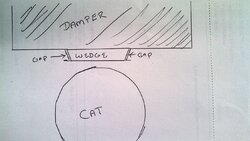I can get a great fire started, and up to temp, rather quickly. I usually start with a large split in the back, a small split in the front and paper and kindling and doing a log cabin style load.
when it comes to a reload and stuffing for a overnight run what is the general consensus? Do I try and get as much as possible into the firebox? have as much wood touching with as little air space possible? can I keep it filled right up to the secondary tubes.
thanks this is for a century cb00005 insert
when it comes to a reload and stuffing for a overnight run what is the general consensus? Do I try and get as much as possible into the firebox? have as much wood touching with as little air space possible? can I keep it filled right up to the secondary tubes.
thanks this is for a century cb00005 insert



